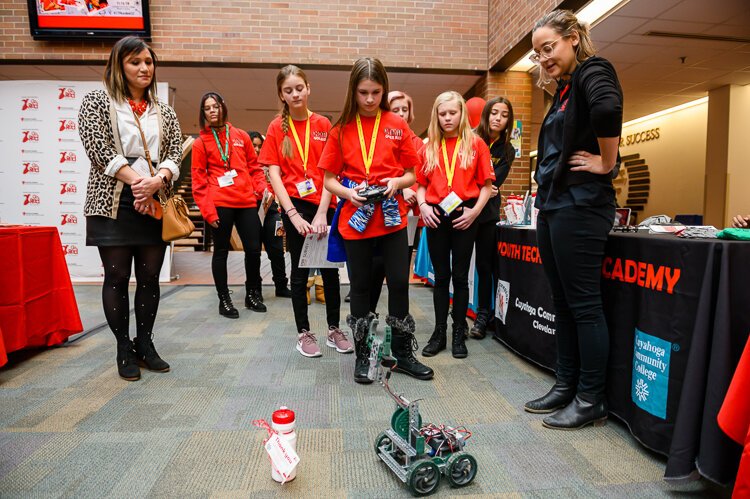Making room: STEM Goes Red opens the door for girls dreaming of high-tech fields
Despite comprising nearly half of the U.S. workforce, women are still underrepresented in science, technology, engineering, and math (STEM) fields. While female scientists, biomedical engineers, and research analysts have made strides in recent decades, this demographic still constitutes only 27% of the overall STEM labor force, according to U.S. Census Bureau figures.
 STEM girls teddy bear surgerySupporting female representation in high-tech jobs is the mission of STEM Goes Red for Girls, a Cleveland American Heart Association (AHA) program growing the ranks of 7th-to-9th-grade girls in STEM. Following last year’s pandemic-spurred virtual event, STEM Goes Red returns in-person at Cleveland State University on Friday, March 11.
STEM girls teddy bear surgerySupporting female representation in high-tech jobs is the mission of STEM Goes Red for Girls, a Cleveland American Heart Association (AHA) program growing the ranks of 7th-to-9th-grade girls in STEM. Following last year’s pandemic-spurred virtual event, STEM Goes Red returns in-person at Cleveland State University on Friday, March 11.
“It comes down to building confidence, and making girls feel like there’s a place for them in these jobs,” says program chair Nicole Ponstingle McCaffrey. “Exposing them to opportunities early enough—especially in communities where programming isn’t strong around STEM— gives them a north star to guide them toward a career.”
Since its 2017 launch, STEM Goes Red has reached 561 girls from 44 schools across Northeast Ohio. Over the years, young innovators have observed heart dissections, learned CPR, performed experiments, and built their own science-related websites.
This year’s day-long event, hosted by Channel 19 News anchor Tiffani Tucker, includes a vendor expo where sponsors such as University Hospitals and Parker Hannifin help empower the next generation of bright young minds.
Historically, the program has drawn middle-to high-school girls from Cuyahoga County. AHA is expanding its scope in 2022, with about 200 students expected to participate in this year’s event. Girls will learn about STEM from young female professionals, who can serve as aspirational figures for an exciting new world, event creators say.
Ponstingle McCaffrey herself entered the tech space from a background in marketing and business development. Now COO of Pandata, a Cleveland-based artificial intelligence consulting firm, Ponstingle McCaffrey knows the importance of reaching an underserved population at a young age.
 STEM girls teddy bear surgery“I was a minority when I entered the industry a decade ago,” she says. “Women are less welcomed in STEM as practitioners, or made to feel that they have to prove themselves to be as good as men. We’re starting to see a shift, but this event combats the notion that women don’t belong in STEM. We’re instilling confidence at a young age that there’s a seat at the table.”
STEM girls teddy bear surgery“I was a minority when I entered the industry a decade ago,” she says. “Women are less welcomed in STEM as practitioners, or made to feel that they have to prove themselves to be as good as men. We’re starting to see a shift, but this event combats the notion that women don’t belong in STEM. We’re instilling confidence at a young age that there’s a seat at the table.”
Women have made some gains in technology spaces, notes Ponstingle McCaffrey. Per census bureau data, women encompassed only 8% of STEM workers in 1970, while making up 38% of all U.S. workers. In ensuing years, the demo has made particularly significant strides in social science occupations—from 19% in 1970 to 64% in 2019.
Further bridging the STEM gender gap requires making more noise for girls dreaming of a profession at the forefront of ideation, research, patent creation, and innovation.
“Educating these girls at a young age is paramount to their success,” says Ponstingle McCaffrey. “The time is now to provide pathways for future careers in STEM fields, while equipping these students to be healthy and strong. I wish I had this education when I was younger.”



